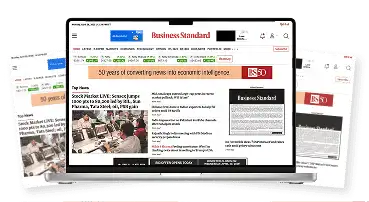Banks fund their mainly long-term lending - like mortgages - with short-term borrowings, for instance on the interbank lending market. Recent movements in the sovereign bond market, which is the starting point for what banks charge, should help them. The spread between British two- and 10-year bond yields has nearly doubled since May 1. It has risen by three quarters in the United States and by more than half in Germany.
Central banks' promises to keep interest rates low are tethering short-term market interest rates. Longer-dated yields are freer to rise as growth picks up and traders anticipate the end of easy money policies. Hence the so-called yield curve, which plots rates as maturities increase, is getting steeper.
However, banks may not be able to benefit as much as in the past. Regulation has changed the rules of the game. National policymakers are keeping a much closer eye on how well banks match up their assets and liabilities.
As a result, banks are now less likely to borrow heavily in the short-term wholesale funding market in order to make longer-term loans.
Demand for credit may be the other constraining factor. In the past, core yield curves have typically steepened to these levels because of the strength of economic activity. This time, at least part of the curve steepening is due to central banks' current unusual policy stance. For example, between 1990 and 2005, the US economy was growing twice as fast, or more, when the spread between two- and 10-year Treasury yields was this wide. Households and firms may not therefore have the same ability to absorb sharp increases in borrowing costs.
Of course, some banks will find current yield curve trends helpful and this is likely to be factored into share prices. But the financial world may have changed too much for investors to bank on these relationships to the extent they did in the past.
You’ve reached your limit of {{free_limit}} free articles this month.
Subscribe now for unlimited access.
Already subscribed? Log in
Subscribe to read the full story →

Smart Quarterly
₹900
3 Months
₹300/Month
Smart Essential
₹2,700
1 Year
₹225/Month
Super Saver
₹3,900
2 Years
₹162/Month
Renews automatically, cancel anytime
Here’s what’s included in our digital subscription plans
Exclusive premium stories online
Over 30 premium stories daily, handpicked by our editors


Complimentary Access to The New York Times
News, Games, Cooking, Audio, Wirecutter & The Athletic
Business Standard Epaper
Digital replica of our daily newspaper — with options to read, save, and share


Curated Newsletters
Insights on markets, finance, politics, tech, and more delivered to your inbox
Market Analysis & Investment Insights
In-depth market analysis & insights with access to The Smart Investor


Archives
Repository of articles and publications dating back to 1997
Ad-free Reading
Uninterrupted reading experience with no advertisements


Seamless Access Across All Devices
Access Business Standard across devices — mobile, tablet, or PC, via web or app





